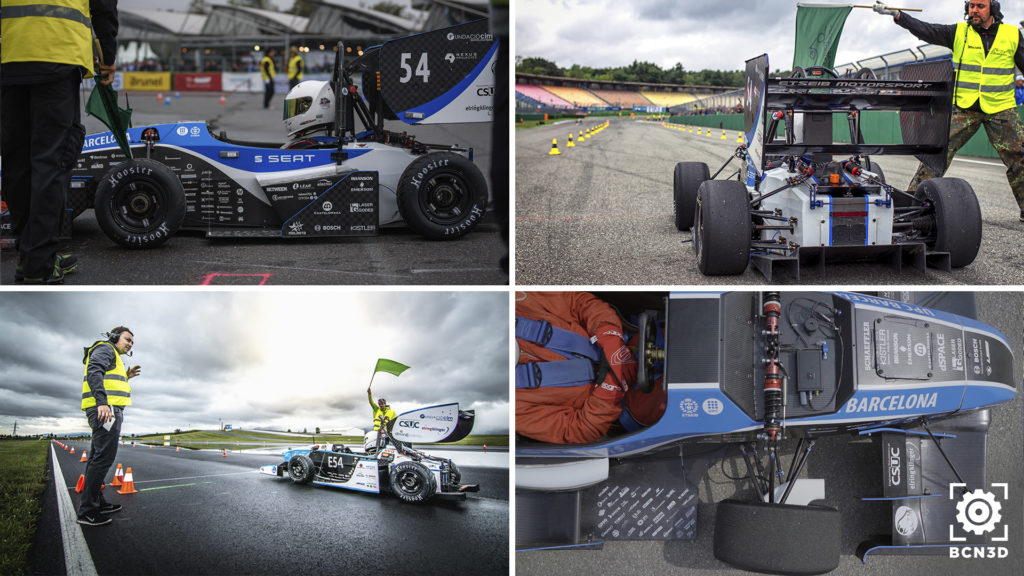3D printing is giving a Spanish university team the edge in the annual Formula Student competition.
The ETSEIB team is comprised of engineering students nearing the end of their studies at the Polytechnic University of Catalonia (UPC) Spain. Working with 3D printers from local manufacturer, BCN3D Technologies has streamlined the manufacturing process.
Since 1998, the Formula Student competition, has pitted international university students against each other to produce, construct, test and then race small-scale formula style racing cars. The event is organized by The Institution of Mechanical Engineers, (IMechE) to promote innovative engineering.
The team has over four years of experience in manufacturing combustion and electric cars.
Redefining workflow with 3D printing
The forty student engineers of ETSEIB Motorsport are using 3D printing to reduce costs and improve logistics during day-to-day operations. Specifically, ETSEIB Motorsport has improved their workflow in three main areas.
First, 3D printing is helping with design validation and component iteration times. Using the open source BCN Sigmax, in-house allows the engineers to print their CAD designs overnight; this radically reduces validation and iteration times boosting efficiency and decreasing dependency on external suppliers. This leaves more time for new concepts to be developed.
Secondly, 3D printing allows cost-effective manufacturing. The ETSEIB Motorsport students are manufacturing both end-use components and tooling for the car. These 3D printed parts include brake ducts, cable ties, and molds for carbon fiber bodywork.

Finally, overall car cost and lead times were reduced thanks to 3D printing. The team produced parts at a faster rate at lower costs when compared to traditional fabrication methods, particularly, the design of complex pieces. By cutting car costs through 3D printing, the team saved thousands of euros on car development which enabled them to pay back their initial investment within the first months of usage.

3D printing in the automotive sector
While mass production using additive manufacturing is still on the distant horizon, as previously reported, the application of 3D printing in the automotive sector is increasing. Italian car manufacturer, XEV teamed up with 3D printer filament manufacturer Polymaker to manufacture a 3D printed low-speed electric vehicle (LSEV) destined for (relative) mass production. XEV reports that using 3D printing to manufacture a car has eliminated processes such as stamping, welding and painting of metals and rubber.
Local Motors is another company using 3D printing in the transport sector and have produced a 3D printed car.
ETSEIB Motorsport was placed in the top ten in three international Formula Student competitions—in Austria, Germany, and Spain. The team was awarded “Best Spanish Team” at the Montmeló circuit in Barcelona. The finals take place between 11-15th of July, 2018 at Silverstone racing track in the UK.
For more stories on the latest auto-manufacturing developments in 3D Printing subscribe to the 3D Printing Industry newsletter, follow us on Twitter and like us on Facebook.
Looking for a change of pace? Sign up to 3D Printing Jobs here.
Featured image shows ETSEIB Motorsport Formula Student racing car. Photo via BCN3D.


